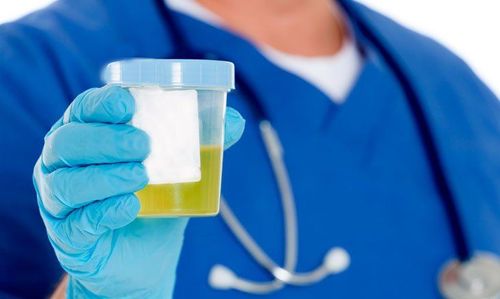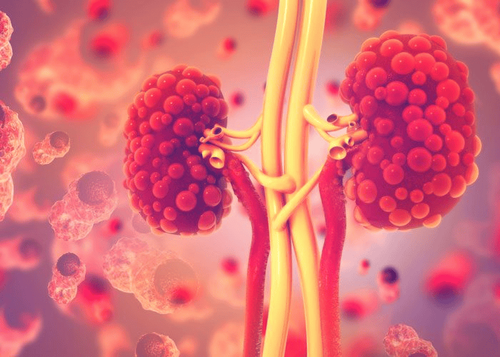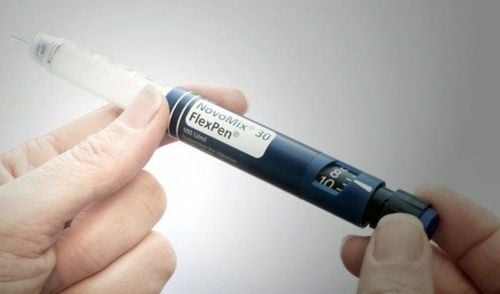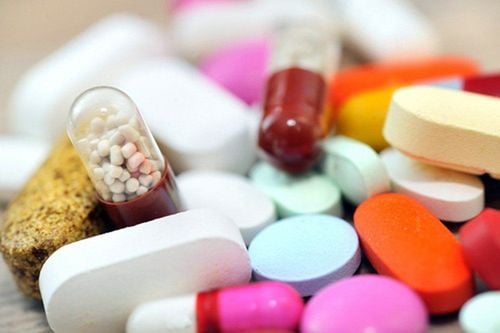This is an automatically translated article.
The article was professionally consulted by Doctor Do Thi Hoang Ha - Doctor of Biochemistry - Laboratory Department - Vinmec Hai Phong International General HospitalUrine glucose measurement is a test used to determine if glucose is present in the urine, so your doctor can tell if you may have diabetes or if you have diabetes. Other causes of glucose intolerance. The role of quantitative urine glucose testing is also essential in supporting diagnosis as well as in response to treatment.
1. Urine glucose test
The urine glucose test is a quick and simple way to check for the presence of an abnormally high concentration of glucose in the urine. Glucose is a material the body needs and uses for energy and is the most important source of energy in cellular respiration. The body converts carbohydrates provided by food (exogenous source of glucose) or converts glycogen stored in the liver (endogenous source of glucose) into glucose which is then used for energy.Having too much glucose in the body is a sign of a health problem. If you don't get treatment and your glucose stays high, serious complications can develop in your body. The most common cause of high glucose levels in the presence of glucose in the urine is diabetes mellitus, a disease that affects the body's ability to control glucose levels.
What is a urine glucose test?
Previously, urine glucose testing was used to aid in the diagnosis as well as monitor the effectiveness of diabetes treatment. But today, most doctors use quantitative testing of venous blood sugar at different times (8-12 hours after fasting, random blood sugar or 2 hours postprandial blood sugar) or blood sugar measurement. finger capillaries to monitor and screen for diabetes instead of testing glucose in the urine as before.
Under normal conditions, glucose is filtered through the glomeruli and completely reabsorbed by the proximal tubules. Thus, a normal healthy person will not have glucose in the urine. The renal tubular reabsorption of glucose is fully effective when the blood glucose concentration is ≤ 180 mg/dl (10 mmol/L). Exceeding this value usually shows the appearance of glucose in the urine.
The cause of the appearance of glucose in the urine is mainly according to the following two mechanisms:
First, due to too high blood glucose levels (such as diabetes), leading to excess reabsorption renal tubules with glucose, glucose will appear in the urine. Second, the amount of glucose in the blood is still normal, but the kidneys are damaged so they are not able to keep the glucose in the blood, so the glucose will escape in the urine. However, it has also been noted that the renal threshold for glucose varies from person to person and it is possible to present a situation in which a patient is certain to have diabetes but does not have the presence of glucose in the urine due to an elevated renal threshold. .
The urine glucose test is a quick and simple method to check for the presence of abnormally high levels of glucose in the urine.

2. The role of urine glucose quantification
A urine glucose test is indicated in cases of suspected kidney involvement or urinary tract infection. When the kidneys are damaged, the patient has to excrete glucose in the urine even though the blood glucose concentration is normal.Normal results (when the diet contains 50% carbohydrates) without hyperglycemia (serum glucose < 140 mg/dL or 7.8 mmol/L postprandial).
Urine sample at a time: Glucose negative (no glucose in urine); 24-hour urine sample: 50 - 300 mg/day or 0.3 - 7 mmol/L/day (SI units). Abnormal results:
Hyperglycaemia Diabetes Pregnancy Renal urinary tract Inherited defects in the metabolism of reducing glucose species (eg, galactose, fructose, pentose) Nephrotoxicity (lead, mercury). A urine glucose test to predict blood glucose is less accurate than a direct blood test, but your doctor will still order it if it feels right for you. The test does not determine your blood glucose level at the time of the test, because urine is made up many hours before the test is performed. The urine glucose test also does not tell you that your blood glucose is too low, which means it cannot be used to diagnose hypoglycemia.
Another difficulty of using urine glucose to aid in the diagnosis of diabetes is that some people have glucose in their urine even when blood glucose levels are normal. The reason is because they have some damage to the kidneys. Some people have a high renal threshold and keep almost all of the glucose in the blood, with no glucose in the urine even when the blood concentration is higher than 10 mmol/l. A low or high kidney threshold can make it difficult to monitor your diabetes.
3. Implementation process

3.1 What should you prepare before doing a urine glucose test? Before having the test, you should inform your doctor about the medications you are taking. Do not stop taking any medication without consulting your doctor. Because there are some drugs that can raise or lower your true blood glucose values, causing confusion in diagnosis and monitoring of treatment.
You need to follow your doctor/test technician's instructions on how to collect a urine sample.
3.2 How is the urine glucose test performed? A routine urine glucose test is done on a morning urine sample (more accurate) or a random urine sample. Your nurse will instruct you to collect a urine sample in the following way:
You will be given a urine sample container with a lid at the clinic or laboratory. Wash your hands thoroughly before taking the sample. Use a wet washcloth to wipe the vulva (for women) or the tip of the penis (for men). Urinate a small amount of urine upstream into the urinal to clear the urinary tract. Then insert the cup into the urinary stream to collect urine midstream. You only need to take about half a cup. Close the cap and do not touch the inside of the vial. Transfer the sample to the laboratory. The testing technician will use a test strip to test it, and give you the results in a few minutes. 3.3 What should you do after a urine glucose test? This test uses regular urine so the patient should not have any difficulty collecting the sample. After this test, if the results are abnormal or your doctor suspects a medical condition, you may need to do additional tests to make a better diagnosis, usually urine samples collected within 24 hours or intravenous blood glucose testing at time points after fasting 8-12 hours. Follow your doctor's instructions for accurate results.
Urine glucose test is a test that serves as an aid in the diagnosis of diabetes, monitoring treatment along with other tests and clinical examinations. Therefore, if there are signs of diabetes mellitus (thinning, rapid weight loss, frequent urination, eating a lot, drinking a lot), the patient should soon seek out reputable medical facilities to perform a urine glucose test. and combined with other clinical examinations to have a timely treatment plan, to prevent dangerous complications that may be encountered due to the disease.
Vinmec International General Hospital is one of the hospitals that not only ensures professional quality with a team of leading medical doctors, modern equipment and technology, but also stands out for its examination and consultation services. comprehensive and professional medical consultation and treatment; civilized, polite, safe and sterile medical examination and treatment space. Customers when choosing to perform tests here can be completely assured of the accuracy of test results.
Please dial HOTLINE for more information or register for an appointment HERE. Download MyVinmec app to make appointments faster and to manage your bookings easily.














